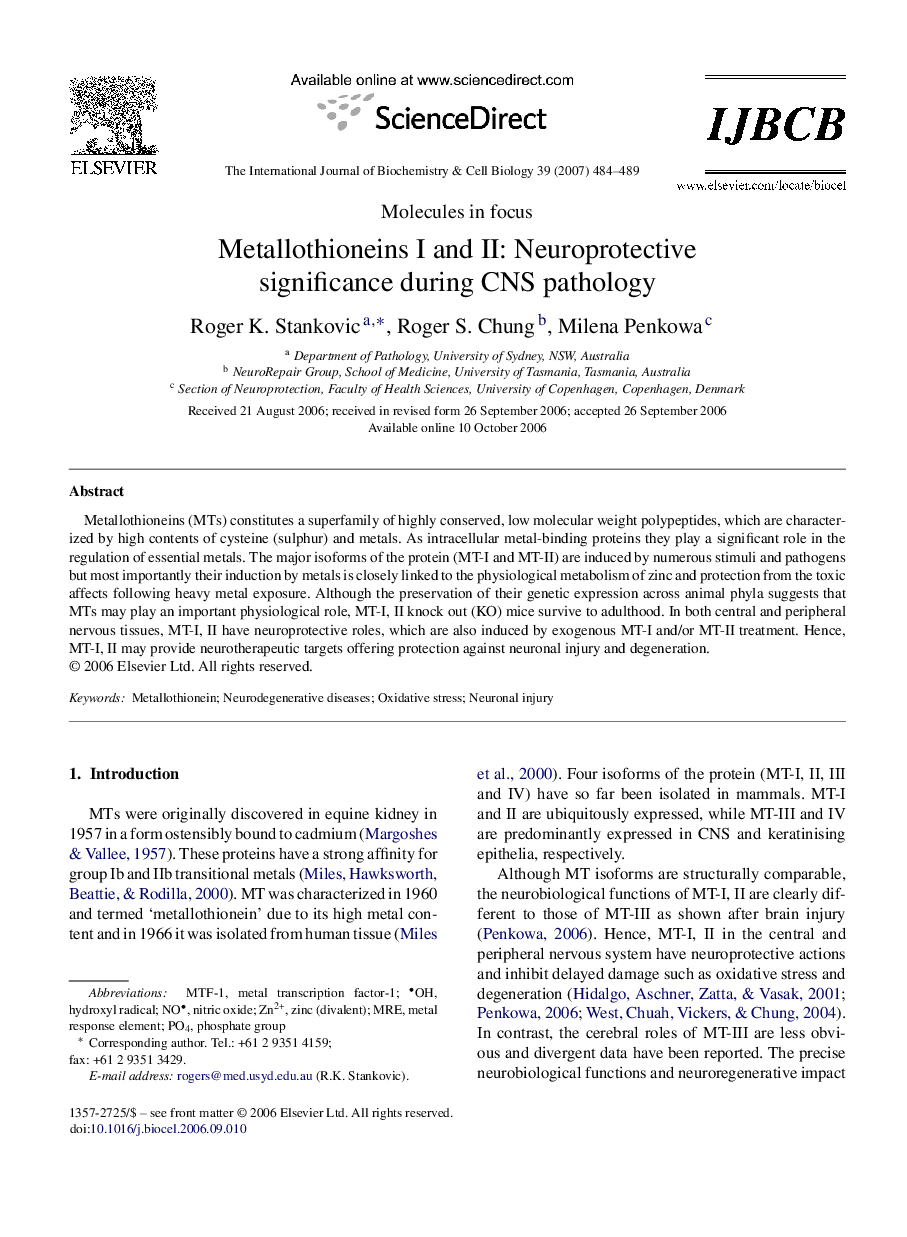| Article ID | Journal | Published Year | Pages | File Type |
|---|---|---|---|---|
| 8326536 | The International Journal of Biochemistry & Cell Biology | 2007 | 6 Pages |
Abstract
Metallothioneins (MTs) constitutes a superfamily of highly conserved, low molecular weight polypeptides, which are characterized by high contents of cysteine (sulphur) and metals. As intracellular metal-binding proteins they play a significant role in the regulation of essential metals. The major isoforms of the protein (MT-I and MT-II) are induced by numerous stimuli and pathogens but most importantly their induction by metals is closely linked to the physiological metabolism of zinc and protection from the toxic affects following heavy metal exposure. Although the preservation of their genetic expression across animal phyla suggests that MTs may play an important physiological role, MT-I, II knock out (KO) mice survive to adulthood. In both central and peripheral nervous tissues, MT-I, II have neuroprotective roles, which are also induced by exogenous MT-I and/or MT-II treatment. Hence, MT-I, II may provide neurotherapeutic targets offering protection against neuronal injury and degeneration.
Keywords
Related Topics
Life Sciences
Biochemistry, Genetics and Molecular Biology
Biochemistry
Authors
Roger K. Stankovic, Roger S. Chung, Milena Penkowa,
